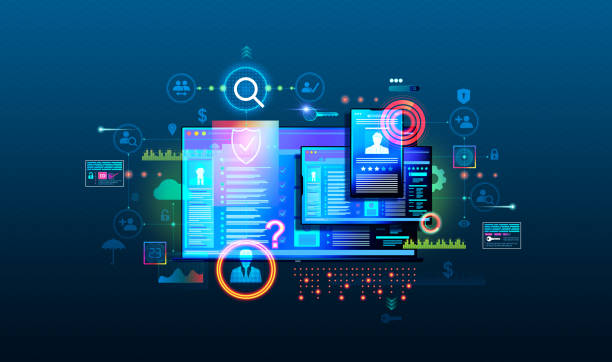Maximizing Business Efficiency: The Key to Effective POS Terminal Usage
Maximizing Business Efficiency: The Key to Effective POS Terminal Usage

Every second matters in the fast-paced corporate environment of today. The Point of Sale (POS) terminal has evolved into a crucial tool for processing transactions, controlling inventory, and optimizing’s company processes in brick-and-mortar companies. However, only when staff members are properly taught and skilled in their use can the full potential of these effective technologies be realized.
The Importance of Effective POS Terminal Usage
The function of POS terminals has expanded beyond simple transaction processing as businesses attempt to offer smooth and effective client experiences. These all-in-one solutions are increasingly essential for customer relationship management, sales reporting, and inventory control. It is crucial for personnel to utilize their maximum potential as they are the foundation of retail and hospitality enterprises.
A well-implemented POS system can help businesses:
- Speed up checkout processes, reducing customer wait times and enhancing satisfaction.
- Monitor inventory levels in real-time, preventing stockouts and optimizing replenishment.
- Capture valuable customer data, enabling personalized marketing and loyalty programs.
- Generate detailed sales reports, offering insights into performance and identifying growth opportunities.
The Significance of Staff Training
Modern POS system implementation is only half the battle. Even the most cutting-edge technology may not be used to its full potential in the absence of sufficient training, leading to missed opportunities and inefficiencies. On the other hand, properly educated workers can maximize the POS terminal’s capabilities, resulting in increased productivity and superior customer service.
Investing in staff training offers several benefits:
- Increased operational efficiency, leading to higher customer throughput and revenue.
- Reduced errors in transaction processing, minimizing discrepancies and enhancing accuracy.
- Improved staff confidence and job satisfaction, leading to better employee retention.
- Enhanced customer experience, fostering loyalty and positive word-of-mouth.
What to Expect in this Blog Post
In this thorough tutorial, we’ll look at the best ways to teach personnel how to use POS terminals efficiently. It doesn’t matter if you run a small business, manage a store, or work in the hospitality industry; the ideas presented here will help you maximize operations and achieve success.
The blog post will cover the following key topics:
- Assessing Staff Training Needs: Identifying the unique requirements of your staff and tailoring training accordingly.
- Developing a Comprehensive Training Program: Creating engaging and practical training modules for staff members.
- Tailoring Training for Different Departments: Addressing the specific needs of various teams, such as sales, management, and customer service.
- Addressing Security and Privacy Concerns: Ensuring that staff understand the importance of data security and customer privacy.
- Ongoing Support and Feedback: Establishing channels for continuous improvement and support after initial training.
- Incentivizing Staff for Proficient POS Terminal Usage: Encouraging staff to embrace the technology and excel in its usage.
- Troubleshooting Common Issues: Equipping staff with the knowledge to handle typical challenges they may encounter.
By the time you finish reading this article, you will have the knowledge and skills required to build a competent, well-trained crew that can make the most of your POS terminals and propel your company to success.
So let’s dig in and learn about the world of efficient POS terminal usage and the enormous advantages it can provide your company!
Assessing Staff Training Needs: Setting the Foundation for Success

Understanding the particular needs and requirements of your workforce is crucial before beginning any training programme. In order to make sure that your team is prepared to efficiently use POS terminals, we’ll go into the crucial parts of staff training needs assessment in this section.
Identifying Roles and Responsibilities
Finding out the precise tasks and responsibilities of the staff members who will be utilizing the POS terminals is the first step in creating an efficient training programme. These positions often include cashiers, sales reps, managers, and customer support agents.
- Cashiers: Cashiers are the front-line employees who handle customer transactions. They need to be proficient in processing payments, applying discounts, and issuing receipts.
- Sales Associates: Sales associates interact with customers, offer product information, and assist with the purchase process. They should be well-versed in navigating the POS system to provide efficient service.
- Managers: Managers often use the POS terminal to access sales reports, track inventory, and manage employee schedules. Their training should focus on the system’s managerial features.
- Customer Service Representatives: Customer service staff may need to process returns, exchanges, and handle loyalty program inquiries, necessitating training in specific POS functions.
Addressing Common Challenges during Training
Introducing a new system to employees might bring a number of difficulties. The training process may be made easier and more productive by recognizing and resolving these issues.
- Resistance to Change: Some staff members may be resistant to adopting new technology, fearing that it might complicate their work. Addressing these concerns and highlighting the benefits of the POS terminal can mitigate resistance.
- Overwhelm with Features: POS terminals come with a myriad of features and functionalities. Employees might feel overwhelmed during training, leading to decreased confidence in using the system. Gradual and focused training can alleviate this issue.
- Lack of Technological Proficiency: Not all staff members may be equally tech-savvy. Tailoring training to individual skill levels and providing additional support to those who need it can bridge the gap.
- Time Constraints: Busy schedules and operational demands might limit the time available for comprehensive training. Providing easily accessible training resources can help staff learn at their own pace.
Understanding Varying Skill Levels
Every team consists of members with various degrees of experience and knowledge. In order to create a training programme that meets the needs of every staff member, it is essential to comprehend these different skill levels.
- Beginners: New hires or employees with little to no experience with POS systems may require foundational training to build confidence and competence.
- Intermediate Users: Some staff members may have prior experience with POS systems or similar technology. Focusing on advanced features and shortcuts can enhance their proficiency.
- Advanced Users: Seasoned employees might already be well-versed in POS terminal usage. However, keeping them updated on any system upgrades or new features is essential.
An effective and efficient POS terminal training programme will be established by taking the time to evaluate the responsibilities, address problems, and comprehend the different skill levels of staff members. Your team will be more equipped to use the POS system effectively and contribute to the overall success of your organization if the training is tailored to each team member’s needs.
Developing a Comprehensive Training Program: Empowering Your Team with POS Proficiency

It’s time to get down to business and craft a thorough training programme that will enable your team to use POS terminals efficiently now that we have a clear grasp of the employee training needs. A well-designed training programme equips your personnel to make the most of this potent instrument while also boosting confidence. Let’s investigate the essential components of such a programme.
Starting with the Basics: Introducing Components and Features
Every trip starts with a single step, and the training process is no different. Introduce the fundamental elements and functions of the POS terminal first to guarantee a solid foundation. Describe the main roles of the software interfaces and physical components.
- Hardware Components: Familiarize staff with the physical elements of the POS terminal, such as the monitor, touch screen, cash drawer, receipt printer, barcode scanner, and card reader.
- Software Interfaces: Walk them through the user interface of the POS system, explaining different buttons, icons, and menu options.
- Primary Functions: Highlight key functions like processing transactions, voiding sales, applying discounts, and printing receipts.
Incorporating Hands-On Training: Putting Knowledge into Practice
If you tell me, I’ll forget. Let me see, and I might recall. I’ll understand if you include me. An effective strategy to boost confidence and reinforce learning is hands-on training. Give your workers hands-on exercises so they may put their knowledge to use right away.
- Sample Transactions: Conduct mock transactions to simulate actual sales scenarios. This exercise will help staff practice using the POS terminal efficiently.
- Inventory Management: Teach staff how to update product information, check stock levels, and track inventory using the POS system.
- Handling Payments: Guide them through processing various payment methods, such as credit cards, cash, mobile wallets, or gift cards.
Role-Playing Scenarios: Preparing for Real-Life Interactions
It can occasionally be difficult to interact with clients, especially when utilizing a new technology. Staff members gain more confidence and comfort managing client encounters via role-playing exercises.
- Handling Difficult Customers: Simulate scenarios where customers may have inquiries, complaints, or special requests, and guide staff on how to respond professionally.
- Upselling and Cross-Selling: Train employees to use the POS system to suggest complementary products or promotions during transactions.
Addressing Frequently Asked Questions: Anticipating and Providing Answers
During the training process, your staff is likely to have questions. Prepare a list of frequently asked questions (FAQs) to address common queries and concerns.
- Technical Troubleshooting: Include solutions to common technical issues that staff may encounter while using the POS system.
- Policy Clarifications: Anticipate questions about return policies, refund procedures, and other relevant business policies.
Providing Training Materials: Creating User Guides and References
Following the training session, learning continues. Create user manuals and reference materials to aid in continuing learning and easy access to information.
- User Guides: Develop comprehensive user manuals that cover all aspects of the POS system and its features.
- Quick Reference Sheets: Prepare concise and visually appealing reference sheets with essential shortcuts and frequently used functions.
Your employees will be put on the right path to become knowledgeable POS terminal users by a thorough training programme that combines introduction seminars, practical application, role-playing, and easily accessible reference resources. They will be well-equipped to improve business operations, increase client experiences, and contribute to the success of your organization as a result of their expertise and experience.
Tailoring Training for Different Departments: Unlocking the Full Potential of POS Terminals

When it comes to employee training, there is no such thing as one size fits all. When employing POS terminals, several departments inside your company have different tasks and duties. Your staff members will be given the training they require to flourish in their positions if the training programme is specifically designed to meet the demands of each department. Let’s investigate how training may be tailored for various departments:
Sales and Cashiers: Streamlining Transaction Processing
The POS terminal is the focal point of the everyday operations of the sales and cashier teams. Their training should concentrate on handling discounts, improving payment methods, and optimizing’s transaction processing.
- Efficient Transaction Processing: Teach sales and cashiers the most effective ways to process transactions quickly, accurately, and with excellent customer service.
- Payment Methods: Familiarize them with various payment methods, including credit/debit cards, cash, mobile wallets, and contactless payments.
- Handling Discounts and Promotions: Ensure that sales and cashier staff understand how to apply discounts and promotional offers accurately and in line with company policies.
Management: Leveraging Data for Informed Decisions
Managers use the information produced by POS terminals to influence decisions and foster corporate expansion. Their training should concentrate on utilizing the POS system to produce sales data, monitor inventory, and efficiently manage staff.
- Sales Reporting: Guide managers on generating comprehensive sales reports from the POS system, enabling them to analyze performance trends and identify opportunities for improvement.
- Inventory Management: Show them how to use the POS terminal to track inventory levels, manage stock, and optimize order management.
- Employee Management: Train managers on using the POS system to manage employee schedules, track working hours, and assign roles and responsibilities.
Customer Service: Enhancing Customer Experience
As the first line of client contacts, customer service personnel’ training is crucial to providing great service. Their education should place a strong emphasis on handling exchanges, refunds, and smoothly integrating loyalty programmed.
- Return and Exchange Procedures: Train customer service representatives on the proper procedures for processing returns, exchanges, and handling customer complaints.
- Loyalty Program Integration: Teach them how to use the POS system to enroll customers in loyalty programs, redeem rewards, and enhance customer retention.
- Effective Communication: Stress the importance of effective communication and problem-solving skills to ensure positive customer interactions.
Addressing Security and Privacy Concerns: Safeguarding Your Business and Customers

The importance of security and privacy in the digital era cannot be emphasized, particularly when it comes to the use of POS terminals. For organizations and their consumers alike, safeguarding confidential data and avoiding fraud are essential. In this part, we’ll look at the essential actions to take in order to solve security and privacy issues related to POS terminal usage.
Educating Staff on Security Best Practices
The first line of defence against possible security breaches is your team. To reduce risks and keep a safe workplace, it is essential to educate them on security best practice’s. Some essential subjects to go through are:
- Password Management: Emphasize the importance of strong and unique passwords for each staff member, and encourage regular password updates.
- Recognizing Suspicious Activity: Train staff to identify signs of fraudulent activities, such as unusual transaction patterns or unfamiliar customers making large purchases.
- Physical Security: Teach employees to safeguard the physical POS terminal and its peripherals from unauthorized access and tampering.
- Phishing Awareness: Educate staff about the risks of phishing emails and social engineering attempts that may target sensitive information.
Stressing the Importance of Safeguarding Customer Information
Customer trust is the cornerstone of any flourishing company, and protecting their data is a non-negotiable obligation. Emphasize the importance of preserving consumer information and abiding by privacy laws. The following are some crucial details to cover:
- Data Encryption: Explain the importance of data encryption, both during transmission and storage, to prevent unauthorized access to customer information.
- Cardholder Data Protection: Train staff on handling credit card information responsibly and securely, following Payment Card Industry Data Security Standard (PCI DSS) guidelines.
- Anonymizing Customer Data: Avoid using unnecessary personal information in loyalty programs or customer databases to protect customer privacy.
Implementing User-Specific Access Levels
Not every employee needs the same amount of POS system access to information. Data integrity is maintained and sensitive information is only available to authorized staff thanks to the usage of user-specific access levels. Take into account the next access levels:
- Administrative Access: Limited to managerial staff who need access to all functions, including sales reports and inventory management.
- Transaction Access: Provided to cashiers and sales associates to process sales and customer transactions.
- Restricted Access: Given to employees with specific roles, like customer service representatives, granting access to handle returns and exchanges.
By implementing user-specific access levels, you can mitigate the risk of unauthorized access and inadvertent data manipulation.
Ongoing Support and Feedback: Nurturing POS Proficiency for Long-Term Success

The completion of a single session does not mark the conclusion of training. A thorough training programme for POS terminals must include continuing assistance and feedback in order to guarantee long-term success and constant development. In this part, we’ll look at ways to help your workers consistently and welcome their insightful input.
Establishing Channels for Ongoing Support
After the first training is finished, it’s critical to give your team easy access to support resources. They are guaranteed help through this assistance anytime they run into problems or want explanation.
- Help Desks: Set up a dedicated help desk or support team to address any POS-related inquiries promptly. This centralized support ensures consistent and accurate responses.
- Designated Staff Trainers: Assign experienced staff members as trainers who can continue to provide guidance and support to their colleagues.
- Online Resources: Create a repository of online resources, such as video tutorials, FAQs, and troubleshooting guides, for staff to access on-demand.
Encouraging Staff Feedback on Training and Usability
A useful tool for improvement is feedback. Encourage employees to voice their opinions about the POS terminal’s usability and the training process. An open and encouraging feedback culture encourages employees to express their ideas.
- Post-Training Surveys: Conduct anonymous surveys to gather feedback from staff about the effectiveness of the training program and any areas they feel need improvement.
- Regular Check-ins: Schedule periodic check-ins with staff to discuss their experiences with the POS terminal and identify any challenges they may be facing.
- Anonymous Suggestion Box: Set up an anonymous suggestion box where staff can share feedback, suggestions, or concerns about the POS system and training.
Utilizing Feedback for Continuous Improvement
Only when feedback is utilized is it truly valuable. Make improvements to the training programme based on the feedback given, and take any staff-identified pain areas into consideration.
- Identify Training Gaps: Analyze feedback to identify areas of the training program that need improvement or additional focus.
- Refine Training Content: Use feedback to refine training materials, making them more engaging, relevant, and tailored to staff needs.
- Address Usability Issues: If staff report challenges with the POS terminal’s usability, work with your POS provider to address any technical issues or explore improvements in the user interface.
- Recognize and Reward Improvement: Acknowledge and reward staff members who provide valuable feedback and actively contribute to improving the training process.
Incentivizing Staff for Proficient POS Terminal Usage: Cultivating a Motivated and Skilled Team

Recognizing and rewarding employees for their skill with POS terminals may serve as a potent motivation to promote ongoing improvement and excellence. In this part, we’ll discuss the value of incentives and how they might improve staff productivity when using POS systems.
Recognizing and Rewarding Exceptional POS Terminal Skills
A key component of developing a supportive and encouraging work environment is recognizing and rewarding employees who exhibit great POS terminal abilities. Honors exceptional efforts and accomplishments in system mastery.
- Employee of the Month: Consider introducing an “Employee of the Month” program that highlights a staff member who consistently excels in utilizing the POS terminal and provides exceptional customer service.
- Public Recognition: Celebrate staff achievements in team meetings or through internal communications, acknowledging their contributions to the business’s success.
- Incentive Programs: Introduce incentive programs that reward staff based on their proficiency in using the POS system. These rewards could be in the form of gift cards, bonuses, or additional time off.
Linking Successful Utilization to Performance Evaluations and Career Growth
The importance of this ability and its bearing on overall business success are illustrated by the inclusion of POS terminal proficiency as a performance assessment criteria. Employee motivation is increased when utilization is linked to prospects for career advancement.
- Performance Metrics: Include POS terminal proficiency as one of the performance metrics in staff evaluations, emphasizing its importance in the overall assessment.
- Training and Advancement: Offer training opportunities and resources for staff members to enhance their POS skills, providing them with the tools they need to grow within the organization.
- Career Pathways: Outline clear career pathways that highlight the link between POS terminal expertise and career advancement. Show staff how their proficiency can open doors to higher-level positions.
Troubleshooting Common Issues: Navigating Challenges with Confidence

Like any technology, POS terminals occasionally run into problems. By arming your team with troubleshooting techniques and solutions, you enable them to effectively handle everyday issues and guarantee efficient operations.
Identifying Common Mistakes and Errors
Start by listing the most typical blunders and faults that employees could make when using POS terminals. You can successfully personalize training and support if you are aware of these problems.
- Transaction Errors: Address common transaction errors, such as voiding sales, processing incorrect amounts, or using the wrong payment method.
- Connectivity Issues: Guide staff on troubleshooting network and connectivity problems that may affect the POS system’s functionality.
Providing Troubleshooting Tips and Solutions
Giving employees the skills to tackle typical problems equips them to handle difficulties in a proactive manner and reduces disruptions to corporate operations.
- Quick Reference Guides: Develop concise troubleshooting guides that provide step-by-step solutions to common issues for easy reference.
- Staff Training Sessions: Conduct regular training sessions to review troubleshooting techniques and ensure staff are up-to-date with the latest solutions.
- Support Channels: Reinforce the availability of support channels, such as help desks and designated staff trainers, where staff can seek assistance in troubleshooting more complex issues.
Conclusion: Empowering Your Business with Effective POS Terminal Training

We have now covered all the crucial components of instructing personnel to use POS terminals proficiently as we approach the conclusion of this extensive tutorial. We’ve covered the essential stages to maximize the potential of your POS system, from identifying training requirements to creating programmed that are specific to certain departments and provide continuous support. Let’s review the main ideas and the need of good POS terminal training for company success.
Summary of Key Points
- Assessing Staff Training Needs: Identify the roles and responsibilities of staff members using POS terminals, address common challenges, and understand varying skill levels to tailor the training program accordingly.
- Developing a Comprehensive Training Program: Start with the basics, incorporate hands-on training and role-playing scenarios, address frequently asked questions, and provide training materials for easy access.
- Tailoring Training for Different Departments: Customize training to meet the specific needs of sales and cashiers, management, and customer service teams, empowering them to excel in their roles.
- Addressing Security and Privacy Concerns: Educate staff on security best practices, stress the importance of safeguarding customer information, and implement user-specific access levels to ensure data integrity.
- Ongoing Support and Feedback: Establish channels for ongoing support, encourage staff feedback on training and usability, and utilize feedback to continuously improve the training program.
- Incentivizing Staff for Proficient POS Terminal Usage: Recognize and reward staff for exceptional POS skills, and link successful utilization to performance evaluations and career growth opportunities.
- Troubleshooting Common Issues: Identify common mistakes and errors during POS terminal usage, and provide troubleshooting tips and solutions for quick problem resolution.
Importance of Effective POS Terminal Training for Business Success
Effective POS terminal training is a strategic decision that may have a big impact on your company’s performance, not merely a box to tick. A knowledgeable and assured personnel guarantees efficient operations, superior customer service, and maximizes the advantages of your POS system. Each employee is essential to growing your company, from streamlining transaction processing to producing insightful sales reports.
Implement the Best Practices Outlined in the Blog Post
It’s now time to act armed with knowledge and insights. Use the best practice’s recommended in this manual to teach your staff to be competent and capable of maximizing the capabilities of your POS terminals. Determine the training requirements for your workers, customize the programme for the various departments, and offer continuing assistance and feedback. Encourage employee competence through rewards and incentives, and provide them troubleshooting abilities for rapid problem solving.
In order to be effective, POS terminal training must be continual. Your company will see increased productivity, greater customer experiences, and eventually sustainable growth as your team members become more competent and self-assured.
We appreciate you coming along with us on this POS terminal learning trip. With the help of this manual, we hope you will be better able to develop a knowledgeable and enthusiastic workforce and build a successful company. Here’s to utilizing your POS system to its fullest capacity and expanding your company to new heights!
BACK TO BLOG PAGE
